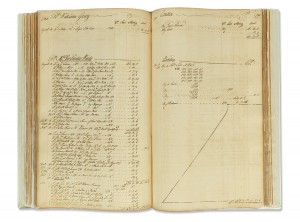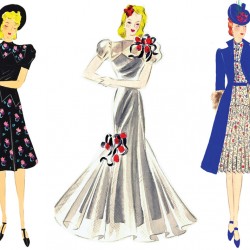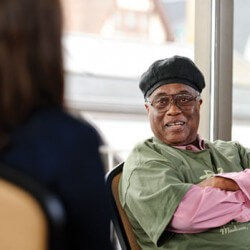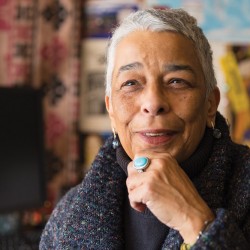History Book

William Ramsay’s nine-hundred-page ledger. Courtesy of the National Museum of American History, Smithsonian Institution (2)
Professor Ann Smart Martin’s students have more than a final grade to show for their semester in her class: they contributed to a permanent exhibit at the Smithsonian Institution’s National Museum of American History in Washington, DC.
Smithsonian curator Nancy Davis asked Martin, a professor of art history and director of the material culture program, to use her research methods to analyze a 1750s ledger from the museum’s archives.
“I always make the joke that account books are the Rodney Dangerfield of objects: they get no respect,” Martin says. “It’s all about how you make them speak.”
William Ramsay’s nine-hundred-page ledger account book had never been analyzed. The record from the Scottish tobacco merchant, who helped found Alexandria, Virginia, included goods bought and sold to George Washington, then in his early twenties. The ledger couldn’t be moved, so students in Martin’s spring 2013 course accessed a microfilm version from 850 miles away. The sixteen students, all interested in museum careers, deciphered Ramsay’s spidery handwriting to build a database and develop a list of items that could provide a glimpse of life in Alexandria.
Translation was required for some phrases, such as “yards of thunder and lightning,” which turned out to be tightly woven wool that repels water. Martin and graduate students Monica Welke MA’14 and Shagun Raina MA’11, PhDx’13 traveled to Washington to examine objects Davis assembled from the Smithsonian’s collection to find materials representative of the kinds of wares Ramsay sold in his shop. The final exhibit includes a ceramic mug, a pair of shoes, a book, a ribbon, and a handkerchief from India, alongside Ramsay’s desk, bookcase, and ledger.
Since the class ended in May 2013, Martin and two graduate students spent additional time working on the interactive digital version. The Smithsonian’s American Enterprise exhibit opened this summer, and Ramsay’s ledger took its place among George Washington’s tea chest, Alexander Graham Bell’s telephone, Thomas Edison’s talking doll, and more than six hundred other objects.
Published in the Winter 2015 issue




Comments
No comments posted yet.